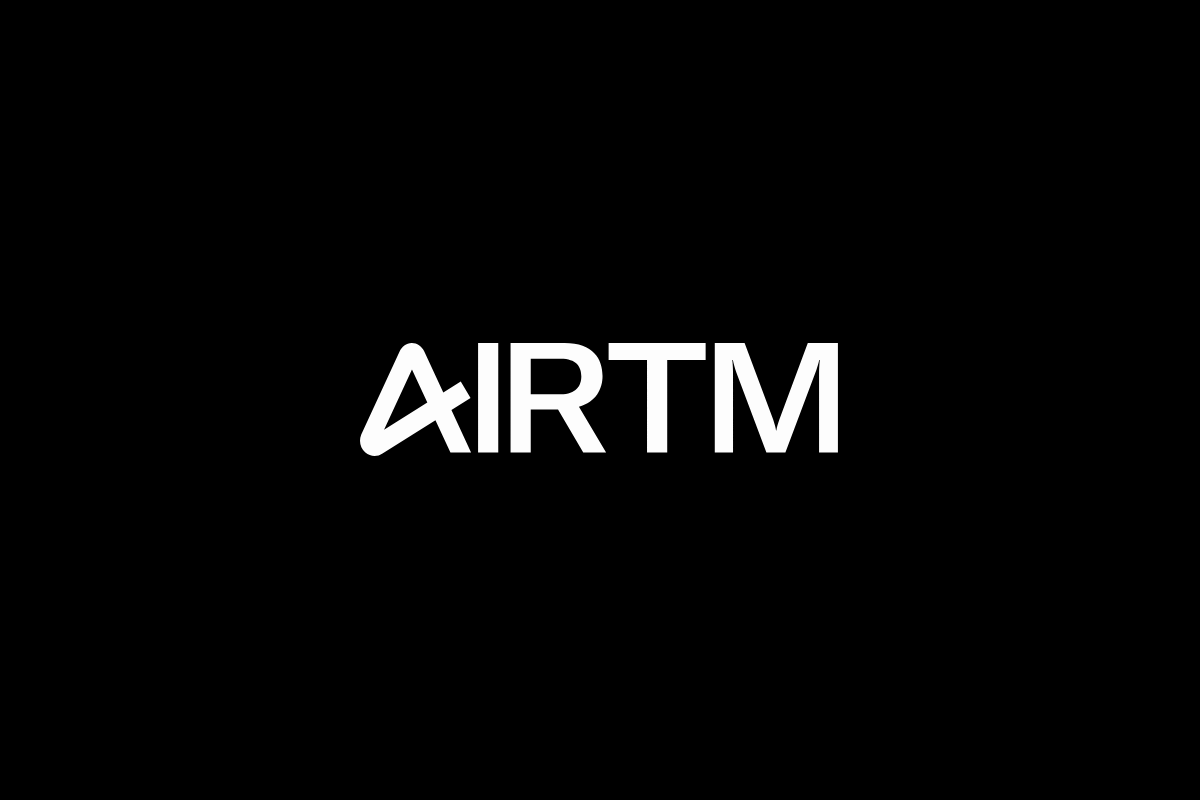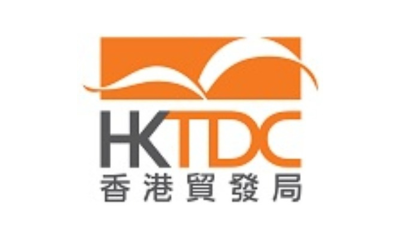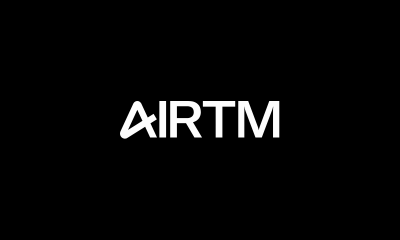Fintech
Offering New Hope for a Rare Form of non-Hodgkin’s Lymphoma: A Discussion with Dr. Ellen Kim on HyBryte(TM) from Soligenix
New York, New York–(Newsfile Corp. – July 6, 2021) – PCG Digital — A rare form of non-Hodgkin’s lymphoma, cutaneous T-cell lymphoma (CTCL) has no current FDA-approved first-line therapies. There are roughly 3,000 new CTCL cases in the United States each year, with more than 20,000 patients living with CTCL.
Small cap biotech Soligenix (NASDAQ: SNGX) is developing and moving toward potential commercialization of HyBryte™ (SGX301 or synthetic hypericin) as a novel first in class photodynamic therapy utilizing safe visible light for the treatment of early stage CTCL.
Recently Dr. Ellen Kim, Medical Director of the Dermatology Clinic for the Perelman Center for Advanced Medicine, Professor of Dermatology at the Hospital of the University of Pennsylvania, and the Lead Principal Investigator for Soligenix’s positive Phase 3 FLASH (Fluorescent Light Activated Synthetic Hypericin) study in CTCL, recently presented key details of HyBryte’s™ efficacy and safety profile at the United States Cutaneous Lymphoma Consortium (USCLC) Annual Meeting.
We caught up with Dr. Kim shortly after the meeting to discuss the HyBryte™ data and the current treatment landscape for CTCL.
- How does HyBryte™ stack up to other treatments that you’ve been using in your practice? If it gains FDA-approval, how will that affect your approach to treating Cutaneous T-Cell Lymphoma (CTCL)?
- HyBryte™ is as effective, and has better short term, and possibly long term, safety profile than current skin directed therapies. It is also effective for CTCL plaques which are traditionally more refractory to many skin directed treatments. Given this, it will be used both as first line therapy for my early stage patients and for patients who can’t continue other therapies due to side effects or loss of response.
- HyBryte™ uses visible light as opposed to ultraviolet (UV) light. Penn Medicine, as well as most centers treating this disease, is currently using UV treatments for CTCL. Is HyBryte™, in your opinion, a safer option?
- HyBryte™ has a definite advantage over phototherapy long term – it’s mechanism of action is distinct from ultraviolet phototherapy and is non-mutagenic so the risk of developing actinic skin damage and skin cancers is lower. Short term side effects were also less common and milder than what we see in traditional phototherapy.
- Dr. Kim, on the Penn Medicine website, it lists Photopheresis and T-Cell Lymphoma Phototherapy as two different treatments. Can you describe the difference between the two? Is one more effective than the other? Where would you classify HyBryte™?
- Phototherapy is a skin-directed treatment utilizing either ultraviolet A or B light and is used primarily in early stage CTCL.
Photopheresis is a systemic treatment where a patient’s peripheral white blood cells are treated ex vivo with UVA-based phototherapy in a machine and is indicated for primarily CTCL patients with blood involvement, most of whom have more advanced stage disease. Early stage CTCL patients without blood involvement are not typically treated with photopheresis at most centers.
Because they are used in different types of patients/stages of disease, and there are no randomized controlled trials that examined phototherapy vs photopheresis, one cannot compare the response rates between phototherapy and photopheresis to each other.
HyBryte™, a skin-directed therapy, is similar to phototherapy with a primary focus on treating early stage disease. Again, targeted as a potential first line therapy.
- Can you describe the process of Photopheresis and phototherapy from a patient’s perspective? How invasive is it for early stage patients? What can the patient expect as far as a timeline and level of discomfort? Does HyBryte™ provide a faster and more comfortable process?
- Traditional phototherapy and HyBryte™ have similar logistics from the patient perspective – they do require in office visits twice or three times weekly for a period of several months. Phototherapy treats the entire skin surface area exposed to the light, whereas HyBryte™ can be used for selective treatment if desired (though multiple lesions can be treated if desired as well). We don’t have direct trial data comparing phototherapy vs HyBryte™ regarding time to response. When I counsel patients starting traditional phototherapy, I counsel that initial response is seen at 4-6 weeks, but full response can take 4-12 months. We do know time to response is similar between HyBryte™ and topical bexarotene gel, topical nitrogen mustard gel, oral bexarotene in early stage disease; however, as I noted earlier, the safety profile of HyBryte™ compared to these other DNA-damaging therapies longer term is potentially much different given the mild side-effects we’ve seen in the Phase 3 FLASH study.
Photopheresis requires 2 outpatient treatments every 4 weeks, and a peripheral IV is placed each visit since the peripheral blood is removed from the patient temporarily during the treatment, so is considered a more invasive procedure. Time to response is slow – first response is seen at 3 months, full response takes 6-24 months. Again, the focus here is mostly later stage or for more advanced disease.
- Can you share any knowledge or experience you have with synthetic hypericin? Is it safe? Have you ever encountered any negative side effects from its use?
- After participating in the FLASH study as the overall study PI, I’ve been impressed with the efficacy and tolerability of HyBryte™ – any localized skin application side effects have been very mild and manageable compared to other current skin directed therapies.
- When will the public receive more details about the positive Phase 3 FLASH study and HyBryte™?
- This year, I’ve had the pleasure to present some of the high level positive results at three prestigious conferences in this disease space. The American Academy of Dermatology, the Society of Investigative Dermatology and the US Cutaneous Lymphoma Consortium; however, we currently anticipate having the full manuscript for the FLASH study (and HyBryte™) published in a peer reviewed medical journal and made available later this year.
- One final question, Dr. Kim. Can you definitively say that you will use HyBryte™ as a treatment option for CTCL in your practice, provided it gains FDA approval?
- Yes, most definitely. This will be a valuable, safer option for our patients who must utilize multiple different skin directed therapies to manage their chronic CTCL over many years and sometimes decades.
To learn more about Hybryte visit https://www.hybryte.com
Disclaimer
This communication was produced by PCG Digital LLC, an affiliate of PCG Advisory Inc., (together “PCG”). PCG is an integrated investor relations, communications and strategic advisory firm. The information contained on this is ‘Paid Advertising’ for purposes of Section 17(b) of the Securities Act of 1933, as amended (together with the rules and regulations there under, the “Securities Act”). PCG is compensated by respective clients for publicizing information relating to its client’s securities. For more information in terms of compensation received for services provided by PCG, see the pertinent advertising materials relating to the respective client. By accessing this Site and any pages thereof, you agree to be bound by the Terms of Use and Privacy Policy.
PCG is not a registered or licensed broker, dealer, broker-dealer, investment adviser nor investment manager, nor does PCG engage in any activities that would require such registrations. PCG does not provide investment advice, endorsement, analysis or recommendations with respect to any securities, and its services to or statements about its clients should never be construed as any endorsement of or opinion about any security of any client. No information contained in this communication constitutes an offer to sell, a solicitation of an offer to buy, or a recommendation of any security or any other similar product or service regardless of whether such security, product, or service is referenced in this communication.
Our reports/releases are a commercial advertisement and are for general information purposes ONLY. We are engaged in the business of marketing and advertising companies for monetary compensation. We only publish favorable information because we are compensated to publish only favorable information.
The contributors may buy and sell securities before and after any particular article, report and publication. In no event shall “PCG” or affiliates be liable to any member, guest or third party for any damages of any kind arising out of the use of any content or other material published or made available by “PCG”, including, without limitation, any investment losses, lost profits, lost opportunity, special, incidental, indirect, consequential or punitive damages. Further, nothing in this communication is intended to provide tax, legal, or investment advice and nothing in this communication should be construed as a recommendation to buy, sell or hold any investment or security or to engage in any investment strategy or transaction. Investing in micro-cap and growth securities is highly speculative and carries an extremely high degree of risk. It is possible that an investor’s investment may be lost or impaired due to the speculative nature of the companies profiled. Never invest in any stock featured by “PCG” unless you can afford to lose your entire investment. We urge investors to conduct their own in-depth investigation of the Profiled Issuers with the assistance of their legal, tax and investment advisers. An investor’s review of the Information should include but not be limited to the Profiled Issuer’s financial condition, operations, management, products or services, trends in the industry and risks that may be material to the profiled Issuer’s business and other information he and his advisers deem material to an investment decision. We encourage our readers to invest carefully and read the investor information available at the web sites of the U.S. Securities and Exchange Commission (SEC) at www.sec.gov and the Financial Industry Regulatory Authority (FINRA) at www.finra.org.
For full disclaimers, including compensation received for professional services, please visit www.pcgadvisory.com/disclosures.
Contact: [email protected]
Fintech
Fintech Pulse: Your Daily Industry Brief (Chime, ZBD, MiCA)

As we close out 2024, the fintech industry continues to deliver headlines that underscore its dynamism and innovation. From IPO aspirations to groundbreaking regulatory milestones, today’s updates highlight the transformative power of fintech partnerships, regulatory evolution, and disruptive technologies. Here’s what you need to know.
Chime’s Quiet Step Toward Public Markets
Chime, the U.S.-based financial technology startup best known for its digital banking services, has taken a significant step by filing confidential paperwork for an initial public offering (IPO). As one of the most valuable private fintechs in the U.S., Chime’s move could potentially signal a renewed appetite for fintech IPOs in a market that has been cautious following fluctuating valuations across the tech sector.
With a valuation that reportedly exceeded $25 billion in its last funding round, Chime’s IPO could set a new benchmark for the industry. Observers note that its strong customer base and revenue growth may make it an appealing choice for investors seeking to capitalize on the digital banking boom. However, the timing and success of the IPO will depend on broader market conditions and the regulatory landscape.
Source: Bloomberg
ZBD’s Pioneering Achievement: EU MiCA License Approval
ZBD, a fintech company specializing in Bitcoin Lightning network solutions, has made history by becoming the first to secure an EU MiCA (Markets in Crypto-Assets Regulation) license. This landmark approval by the Dutch regulator positions ZBD at the forefront of compliant crypto-fintech operations in Europe.
MiCA, which aims to harmonize the regulatory framework for crypto-assets across the EU, has been a focal point for industry players aiming to establish legitimacy and expand their offerings. ZBD’s achievement not only validates its operational rigor but also sets a precedent for other fintech firms navigating the evolving regulatory landscape.
Industry insiders view this as a strategic advantage for ZBD as it broadens its footprint in Europe. By leveraging its regulatory approval, the company can accelerate its product deployment and establish trust with institutional and retail users alike.
Source: Coindesk, PR Newswire
The Fintech-Credit Union Synergy: A Blueprint for Innovation
The convergence of fintechs and credit unions continues to reshape the financial services ecosystem. Collaborative initiatives, such as the one highlighted in the recent partnership between fintech innovators and credit unions, are proving to be a potent force in delivering tailored financial solutions.
This “dream team” approach allows credit unions to leverage fintech’s technological expertise while maintaining their community-focused ethos. Key areas of collaboration include digital payments, personalized financial management tools, and enhanced loan processing capabilities. These partnerships not only enhance member engagement but also enable credit unions to remain competitive in an increasingly digital-first financial environment.
Industry analysts emphasize that such collaborations underscore a broader trend of traditional financial institutions embracing fintech-driven solutions to bridge service gaps and foster innovation.
Source: PYMNTS
Tackling Student Loan Debt: A Fintech’s Mission
Student loan debt remains a pressing issue for millions of Americans, and a Rochester-based fintech aims to offer relief through its cloud-based platform. This innovative solution is designed to simplify loan management and provide borrowers with actionable insights to reduce their debt burden.
The platform’s features include repayment optimization tools, personalized financial education, and seamless integration with loan servicers. By addressing the complexities of student loan management, this fintech is empowering borrowers to make informed decisions and achieve financial stability.
As the student loan crisis continues to evolve, solutions like this highlight the critical role fintech can play in addressing systemic financial challenges while fostering financial literacy and inclusion.
Source: RBJ
Industry Implications and Takeaways
Today’s updates underscore several key themes shaping the fintech landscape:
- Regulatory Milestones: ZBD’s MiCA license approval exemplifies the importance of regulatory compliance in unlocking growth opportunities.
- Strategic Partnerships: The collaboration between fintechs and credit unions demonstrates the value of combining technological innovation with traditional financial models to drive customer-centric solutions.
- Market Opportunities: Chime’s IPO move reflects a potential revival in fintech public offerings, signaling confidence in the sector’s long-term prospects.
- Social Impact: Fintech’s ability to tackle systemic issues, such as student loan debt, showcases its role as a force for positive change.
The post Fintech Pulse: Your Daily Industry Brief (Chime, ZBD, MiCA) appeared first on News, Events, Advertising Options.
Fintech
SPAYZ.io prepares for iFX EXPO Dubai 2025

Leading global payments platform SPAYZ.io has confirmed it will be attending iFX EXPO Dubai 2025 on 14 to 16 January. Exhibiting at Stand 64 at Trade Centre Dubai, SPAYZ.io’s team of professionals will be on hand providing live demonstrations of its renowned payment services for payment providers. Attendees will also receive exclusive insight into SPAYZ.io’s plans for 2025 alongside early early access to its upcoming plans for the new year.
SPAYZ.io delivers a host of payment solutions that leverage the latest technological innovations and open access to the fastest growing emerging markets across Africa, Europe and Asia. Over the past year, there has been huge demand for its Open Banking and local payment method services, alongside bank transfers, mass payouts, online banking and e-wallets.
Yana Thakurta, Head of Business Development at SPAYZ.io commented: “We look forward to once again participating at iFX Dubai to expand our network of partners and clients. It’s a fantastic way to kick off the year, connecting with thousands of industry leaders from FOREX platforms to trading companies, and everything in between.
“Our key goal for iFX Dubai EXPO 2025 is to expand our portfolio of solutions and geographies. We’re using this as an opportunity to partner with like-minded entities who share our ambition to provide payment solutions that are truly global.”
Come meet SPAYZ.io’s team at the Trade Centre Dubai at Stand 64. You can also book a meeting slot with a member of a team.
The post SPAYZ.io prepares for iFX EXPO Dubai 2025 appeared first on News, Events, Advertising Options.
Fintech
Airtm Enhances Its Board of Directors with Two Strategic Appointments

Airtm, the most connected digital dollar account in the world, is proud to announce the addition of two distinguished industry leaders to its Board of Directors: Rafael de la Vega, Global SVP of Partnerships at Auctane, and Shivani Siroya, CEO & Founder of Tala. These appointments reflect Airtm’s commitment to innovation and financial inclusion as the company enters its next phase of growth.
“We are thrilled to welcome Rafael and Shivani to Airtm’s Board of Directors,” said Ruben Galindo Steckel, Co-founder and CEO of Airtm. “Their unique perspectives and proven track records will be invaluable as we continue scaling our platform to empower individuals and businesses in emerging markets. Together, we’ll push the boundaries of financial inclusion and innovation to create a more connected and equitable global economy. Rafael and Shivani bring a wealth of experience and strategic insight that will strengthen Airtm’s mission to connect emerging economies with the global market.”
Rafael de la Vega, a seasoned leader in fintech global partnerships and technology innovation, is currently the Global SVP of Partnerships at Auctane. With a proven track record of delivering scalable, impactful solutions at the intersection of fintech, innovation, and commerce, Rafael’s expertise will be pivotal as Airtm continues to grow. “Airtm has built a platform that breaks down barriers and opens up opportunities for people in emerging economies to connect to global markets. I am excited to contribute to its growth and help further its mission of fostering financial inclusion on a global scale,” said Rafael.
Shivani Siroya, CEO and Founder of Tala, is a pioneer in financial technology, renowned for empowering underserved communities through access to credit and essential financial tools. Her leadership in leveraging data-driven innovation aligns seamlessly with Airtm’s vision of creating more equitable financial opportunities. “Empowering underserved communities has always been at the core of my work, and Airtm’s mission resonates deeply with me. I’m thrilled to join the Board and work alongside such a dynamic team to expand access to financial tools that truly make a difference in people’s lives,” said Shivani.
The post Airtm Enhances Its Board of Directors with Two Strategic Appointments appeared first on News, Events, Advertising Options.
-

 Fintech7 days ago
Fintech7 days agoFintech Pulse: Your Daily Industry Brief (Synapse, Shenzhen Institute, Visa, AutomatIQ, MeridianLink)
-

 Fintech6 days ago
Fintech6 days agoFintech Pulse: Your Daily Industry Brief (Revolut, Bestow, Advyzon, Tyme Group, Nubank)
-

 Fintech4 days ago
Fintech4 days agoFintech Pulse: Your Daily Industry Brief (Chime, ZBD, MiCA)
-

 Fintech6 days ago
Fintech6 days agoAsian Financial Forum returns as region’s first major international financial assembly in 2025
-

 Fintech7 days ago
Fintech7 days agoNASDAQ-Listed LYTUS Appoints Visionary Leader Sai Guna Ranjan Puranam as COO (Lytus Healthcare) and Group CTO (Lytus Technologies) to Revolutionize Healthcare and Technology
-

 Fintech PR3 days ago
Fintech PR3 days agoAccording to Tickmill survey, 3 in 10 Britons in economic difficulty: Purchasing power down 41% since 2004
-

 Fintech PR3 days ago
Fintech PR3 days agoPresident Emmerson Mnangagwa met this week with Zambia’s former Vice President and Special Envoy Enoch Kavindele to discuss SADC’s candidate for the AfDB
-

 Fintech4 days ago
Fintech4 days agoAirtm Enhances Its Board of Directors with Two Strategic Appointments








